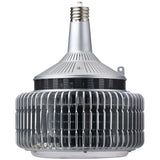How to Make Sure Photocontrols Are Compatible With LED Lighting
Posted by Dave on for ProLampSales

Photocontrol devices use photocells to determine ON/OFF status of outdoor lighting based on the ambient light level.
While generally understood as responding to visible light, some photosensors also respond to infrared (IR) and ultraviolet (UV) radiation.
Normally used for roadway, area, parking, flood and security lighting, photocontrols automatically control the ON/OFF cycle to optimize the effectiveness of the lighting and maximize energy savings.
In daylight harvesting applications, the photocontrol is mounted inside the occupied space (eg, classroom) and it sends light level information to a control module. The control module uses this information to modulate the electric light output either by raising or lowering the light output by controlling, most often, the dimming ballast.
This system allows the total light inside the space to remain stable throughout the day – optimized light for the occupants and energy savings for the facility.
Photocontrols Designed for Traditional Light Sources Will Not Work with LED
Of significant importance today is the compatibility of photocontrols for LED light fixtures. All it takes is a quick online search for "can photocells be used with LEDs" to discover a broad range of lighting forums, electrical contractor news feeds and other sources expressing complaints about how their photocontrol set-up does not work with LED fixtures.
Traditionally, photocontrol manufacturers only had to design there controls to work with tungsten (incandescent / halogen) and ballasted (fluorescent / HID) lighting loads. It turned out that these traditional photocell devices did not work, or did not work very well, with LED.
Eventually the manufacturers caught up. They learned about the unique electrical characteristics of LED and built the required control capabilities into their devices.
What to Look For in the Specifications to Ensure Photocell Compatibility with LED
Photocontrol specification sheets always include rated loads for the types of light source the device can control. The normal way of indicating this is as follows:

Tungsten refers to incandescent and halogen light sources. Ballast refers to fluorescent and HID lighting. If LED is not included, as in this case, the photocontrol is unlikely to work with LED fixtures.
Rule 1: If LED is replacing a traditional light source in a system that includes photocontrols, assume the existing photocontrols are not compatible with LED.
Rule 2: Make sure the voltage indicated in the photocontrol specs matches the installation voltage of the LED system.
Rule 3: Consult the specification sheet for the rated loads. It must include a rating for LED. When it includes LED, simply confirm that the indicated maximum load for LED will not be exceeded. If so, look for another photocontrol device that allows higher LED load. Here is an example from a specification sheet for a photcontrol designed to work with LED lighting.

The wattage and VA number of course varies, but it indicates the maximum electrical load allowed for that type of light source.
In some instances a manufacturer may call out the LED load rating differently. Below is an example. According to the manufacturer, the Electronic Ballast load rating includes LED. If you are uncertain, always contact the manufacturer for clarification. This example also shows how various versions of the same photocontrol - Specifier, Select, Standard - provide different load ratings for LED - 8A, 6A, 2A. It's always important to check that the LED lighting load does not exceed the maximum rated load in the photocontrol spec sheet.

Today, in 2018, pairing LED systems to photocontrols can be done successfully if the guidelines presented in this post are followed. Most lighting control manufacturers offer a full series of photocontrols for varied voltages and loads specifically designed to accommodate LED lighting applications.
- Posted in Controls, Energy Efficiency, Landscape & Outdoor, LED
Featured Products (View All)
1 Comment





Is a traditional electric photocell compatible with LED bulbs used in a traditional fixture like an exterior lamp post.